Thanks Agota Bialobzeskyte for writing this case study.
Samuel Hulick is a UX consultant specifically focused on user onboarding. He runs the website User Onboard, which analyzes popular web apps’ first-run experiences, and is author of The Elements of User Onboarding.
Esoteric to practical: coming up with the idea for The Elements of User Onboarding
After doing a customer acquisition apprenticeship with Rob Walling, Samuel was interested in experiencing bringing a product to the market firsthand. He didn’t want to invest loads of time and energy into developing an SaaS application, though. “I just wanted to keep it small for my first ever attempt. I’m still very much focused on developing a SaaS application someday,” he said. Samuel had been reading Nathan’s blog for a while at that point, so he decided to try his hand at writing and selling his own book.
“The book’s topic was originally going to be really esoteric (basically, a thought piece on aligning the success of your company with the success of your customers), and I knew it was going to need an adjustment when I had a hard time even explaining it in person. Still, I plowed ahead by sticking up a landing page to collect emails and posting an onboarding teardown to drive traffic to it. The first teardown was such a success that I decided to follow up with another. I quickly realized that user onboarding was a big point of pain/interest for a lot of companies, which finally gave me a way better book topic to run with.”
Lessons:
- Don’t be afraid to let go of your initial idea. People get so attached to their ideas that they don’t notice when the market clearly demands something else. Samuel started out with an “esoteric” book idea, yet he ended up writing a practical guide to user onboarding. Don’t be afraid to let go of your initial idea if it means that you will fulfill the needs of your target audience better.
- Pick a target audience that has money and is willing to spend it. Many products are doomed to failure before they are created. Picking the wrong target audience pretty much guarantees that you won’t make any money. Samuel picked a perfect target audience: people who are responsible for the growth of companies have both the means and willingness to buy his book. Always go after people with money who are willing to spend it.
- Make sure that you are solving a profitable problem. It’s not enough to pick the right target audience – you have to also pick the right problem to solve. Samuel got this right as well; as he says on his sales page, user adoption is the lifeblood of every company, corporation, and start-up, bootstrapped or otherwise. Your target audience may have both the money and willingness to spend it, but are you sure that they are willing to pay you to solve this particular problem?
User Onboard: Getting from 0 to 6,000 subscribers
Samuel started building his list from scratch in November 2013. He posted his first two teardowns using SlideShare, but then decided he wanted more control over the user experience and conversion options, so he started User Onboard.
How did he promote the website? “I posted new teardowns to Designer News and Growth Hackers, but that was pretty much it for promotion. Everything else was people tweeting about the teardowns, posting about it on their blogs, mentioning it in their newsletters, etc.
“As for content, I didn’t ‘guest’ anywhere but this post and its companion tweet really blew up. It wound up being featured on the Buffer blog and later on Fast Company. It was also a ‘recommended tweet’ within the Buffer application, so tons and tons of people passed it around (though the vast majority were almost definitely not in my target market).
“I also co-hosted a ‘live teardown’ webinar with Joanna Wiebe of CopyHackers, and published an interview with Ryan Singer of Basecamp.”
Lessons:
- Start by validating your idea. When you feel like you have a great idea, it’s easy to fool yourself into thinking that there’s no need to spend time validating it because it’s “obvious” that people will buy your product. Samuel didn’t fall into this trap; he decided to first test the waters by posting teardowns and observing what happened. It doesn’t matter how awesome you think your idea is, it’s important to validate it before putting time, energy, and money into production, otherwise you are setting yourself up for failure.
- Consider putting off the actual writing of the book until you have a decent number of subscribers. Once you have validated the idea, you are probably eager to jump straight into writing. It may be wise to wait for a bit, though, because building an email list and writing the book at the same time can be taxing. Samuel only started writing the book once he already had several thousand subscribers. Consider following his example and pouring all your energy into building a list before you start writing the book.
- Get creative when it comes to list building. People are used to seeing the same email list building tactics all over the Internet (free e-book, free email courses, free videos, etc.), which makes them develop a sort of blindness to all of that. What’s the best way to get around this blindness? Do something unusual that provides massive value. Samuel did this by posting teardowns of popular apps. What can you do to stand out from the crowd?
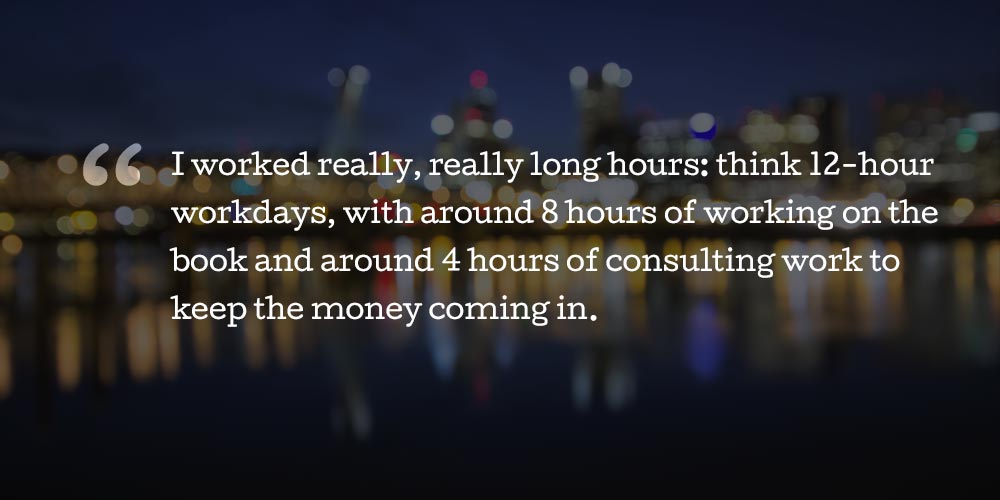
Really, really long hours: Writing The Elements of User Onboarding in three months
Samuel started writing the book in the beginning of January 2014 when his email list reached the 3,000 subscribers mark. He began by writing down every single thing that he could think of that he wanted to talk about that was related to the topic of user onboarding, which ended up filling four to five different pieces of paper. “I then realized that I wanted to create a book that would be really useful to people, so I kind of forgot everything that I had written down and decided to structure the book around the incremental steps that people would need to take to become more successful with user onboarding.” He then started working on the book full time. “I worked really, really long hours. Think 12-hour workdays, with around 8 hours of working on the book and around 4 hours of consulting work to keep the money coming in,” says Samuel. It took him around three months to finish The Elements of User Onboarding.
Lessons:
- This is not about you, it’s about your readers. It’s important to understand that there’s a difference between writing as a hobby and writing with the aim of making money. When you write for pleasure, you write about things that matter to you, and when you write for profit, you write about things that matter to your readers. Samuel made a great move by ditching his list of topics that he wanted to write about and focusing on making the book as useful as possible to his readers. Do you want to make money with your book? Postpone writing your stream-of-consciousness-style essays for a bit and focus on writing a book that is valuable to your target audience.
- Try to free up as much time and energy for writing the book as you possibly can. Samuel made writing the book his main focus throughout these three months. This, of course, is ideal, but not everyone’s circumstances allow that. However, you can still look for ways to temporarily reduce your workload and cut down on your commitments so that you will have more time and energy to work on your book.
- Make time for writing, even if that means working long hours. You have to be prepared to put in the time and energy required if you want to pull this thing off. Samuel worked 12-hour days for most of those three months that he spent on writing the book. Don’t use the “I’m too busy” excuse. You want to write a book? Make time for it.
- This is going to be tough. Please discard any romantic notions that you may have about the process of writing a book. There is a reason why writers say that they hate writing but love having written. “One thing that I remember myself saying quite a lot when I was in the middle of it was that I was really glad that I didn’t know how hard it was going to be when I started or else I wouldn’t have. I think making a firm commitment to seeing it through before you get in and find out how difficult it is was one of the biggest things that I had going for me.” There will probably be times when you want to throw your laptop to the wall. This is to be expected. Making a commitment to finish the book no matter what will help you a lot once the going gets tough (which it will).
The $7,500 Day, the $20,000 Week: Launching The Elements of User Onboarding
Samuel did a lot of pre-launch work by keeping in touch with his subscribers, sending out advance review copies to influencers and gathering testimonials from them, and striking discount deals with several companies.
- Email marketing. Here’s how Samuel’s actual launch sequence looked like: one email six days prior to the launch that announced the launch date, one email one day prior to the launch that reminded people of the launch date and contained all the information about the book, one email on the launch morning that announced the launch itself, and one email the next day that reminded people that they can still get the book at a 10% launch discount.
- Advance review copies. Samuel created a list of influencers that he wanted to reach out to. “I probably had a list of around a hundred people that I reached out to personally around two weeks before the launch by sending them an early advance copy for free and without any expectations. I then followed up to find out what they thought about it. If they had good things to say about the book, I’d ask, ‘Hey, can I use this as testimonial?’ More often than not, they were totally okay with it.” He also reached out to people on his list on the launch day telling them that the book is launched and if they liked the advance copy they got he’d appreciate it if they’d tweet out a link to the book. “I got a lot of exposure through that too,” says Samuel.
- Discount deals. “I think what really paid off was hustling up discounts for the book. Any time I’d speak to an employee in a company of interest, I’d ask for an introduction to whoever would be the best person to speak to about setting up a discount deal. This led to discounts for Unbounce, CrazyEgg, Drip, Olark, and Wistia that I included in my book package. This way my readers got discounts for relevant products and services, and I got extra exposure on the launch day since these big companies had an incentive to tweet about my book. Also, having an affiliation with reputable companies makes you look more credible.”
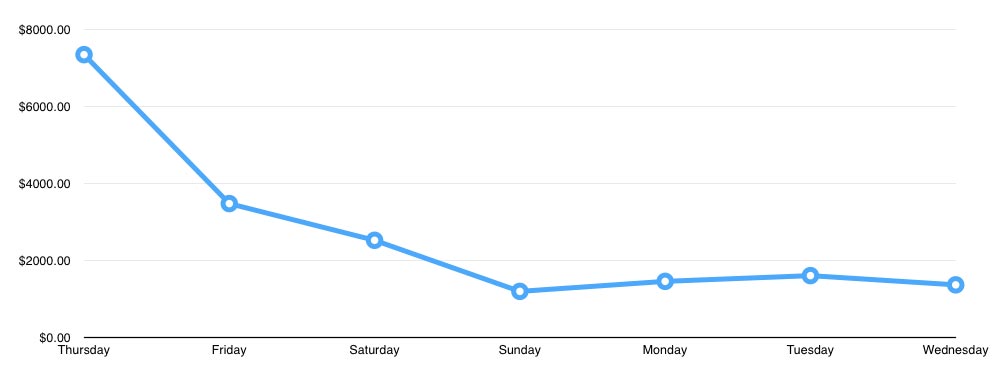
He launched his book to almost 6,000 subscribers on March 27th and made around $7,500 on the launch day and around $20,000 on the launch week. How does Samuel feel about his first launch? “I’m glad I got some rookie mistakes out of the way, and am thankful I avoided any really grave ones.”
Lessons:
- Offer a decent launch discount. The bigger the discount, the more compelled people will be to buy the product. “I offered a 10% discount on the launch day. In retrospect, that was a mistake, since that wasn’t motivating enough for a lot of people. I think I should have offered a 20% discount instead.” Don’t be afraid to offer a considerable discount on the launch day since that will help you get more sales.
- Reach out to influencers in your field. Samuel made a great move by sending out around one hundred advance review copies (some serious hustle there!). “I didn’t have many connections when I started User Onboard. However, I had my list of people I wanted to reach out to, so I took advantage of every opportunity to establish some sort of connection between me and them. For example, if I saw that someone from that list retweeted a teardown that I did, I’d use that as opportunity to say ‘Hey, great to see that you retweeted this teardown, the book itself is coming out soon.’ Of course, I also cold-emailed a lot of people and was amazed at how receptive they were.”What is his advice on getting the attention of busy influencers? “I think Ryan Delk from Gumroad put it better than anyone I heard: if you want to ask for value, provide value beforehand. So, if there’s anything you can do to make yourself helpful to the people that you want to ask for help with your product, do it, and you will find that they will be much more receptive this way. Also, one thing that worked well for me was starting the conversation by mentioning something that proves that you are interested in them, like saying, ‘You know, that article of yours was really helpful to me,’ or ‘I’ve been following your career since you were working in that tiny startup.’ It works much better than just going, ‘Dear Sir, please review my book, thank you!’ This was easy for me because people on my list were genuine heroes of mine already”.Connections in your field can prove extremely valuable during the launch. Why don’t you make your own list of people to reach out to and start adding value to them?
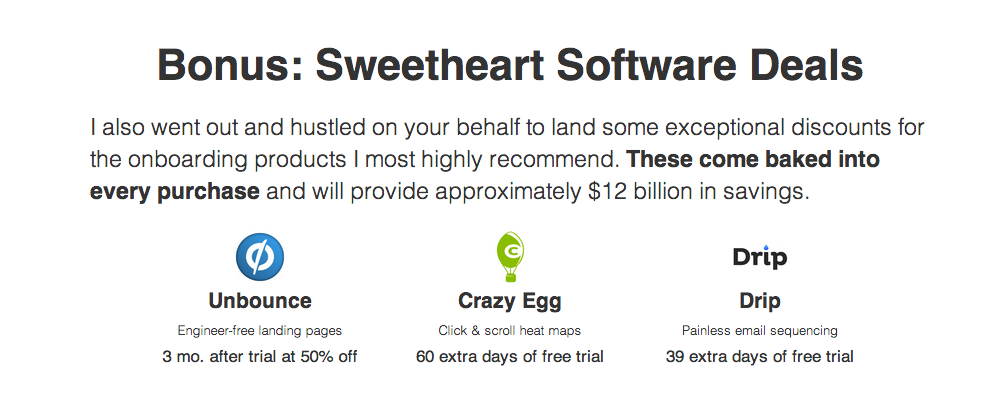
- Try to strike some discount deals with relevant companies. This may seem like a daunting task, but it’s actually quite doable. “You can frame it this way: I believe in your product; I want the people who read my book to get the best start possible, and therefore, I’d like to send some customers your way.” Don’t be afraid to contact companies that sell products and services relevant to your readers and ask for discount deals. Make sure you only make deals with companies you would recommend to your friends, though. “They were all companies I genuinely recommended, whether they went through with offering deals or not. I hate when books come off as ‘infomercials’ for services or affiliate products, and really wanted to make sure I was toeing the ethical side of that line.”
What’s next for Samuel?
Samuel didn’t do much in terms of post-launch promotion besides continuing to post onboarding teardowns. It’s hard to estimate how much the book will make each month once the monthly revenue stabilizes since the launch wasn’t that long ago. However, Samuel made over $9,000 from the book in the last 30 days, so things look promising. In total, The Elements of User Onboarding has made a little over $37,000 so far. What’s next for Samuel?
“I’m continuing to publish teardowns at User Onboard, which is a great way to promote both the book and my consulting services. It’s directly led to way more consulting opportunities than I can take on, so that’s an exciting problem to have. The book is a great building block for that as well, and also as a nice source of passive income. Workshops, video courses, and a podcast are all on the horizon. Post-Authority life is very good.”

What would Samuel do differently?
- He would build more anticipation around the product via email marketing. “I’ll admit that I didn’t do well in this department. I only emailed my subscribers when I posted a new teardown on User Onboard (this was prior to the actual launch sequence). I should have sent them more information about the book, relevant material, sample chapters, etc. Now it was more like, ‘Oh, by the way, here’s this other thing that I’m launching.’ I now realize how important it is to warm the customers up for the launch.”
- He would go through the process of trying to sell the book in person. “I really just put up what I thought people would buy and kind of assumed that they were warmed up enough based on the teardowns that I did, but I was wrong. My initial offer was vague and confusing. Getting people on Skype and trying to sell them the book would have allowed me to see what kind of questions people have, where they push back, what I’m not explaining in the right way, and so on. If I had done that, I’d have known what I needed to say on the sales page. I’d have known how to create the tiers, I’d have known how to describe the value they were offering. That would have changed a lot.”
- He would invest a lot of time and energy into creating the sales page instead of just throwing one up at the last minute. “I wish I had given myself at least a week to make sure that I had a great sales page because my initial one was done in a rush and as a result was too vague and left people confused. For example, many people weren’t even aware that it was an actual sale page (not an advertisement), which clearly was a massive issue. I had to fix things really fast once the confused readers started emailing me. Many of these iterations seem obvious now but didn’t even occur to me until I got some feedback. All this mess ended up costing me a lot of money.”
What was the most valuable lesson that Samuel learned from Authority?
“The whole notion of deliberately and methodically building an audience sounds obvious in retrospect, but a lot of Nathan’s work was instrumental in opening my eyes to it as a primary strategy. The book’s advice was sound but would have been pointless if I had no one to sell it to. I know Nathan says his email list is his most valuable business property, and I now can say I’ve experienced that as well.”
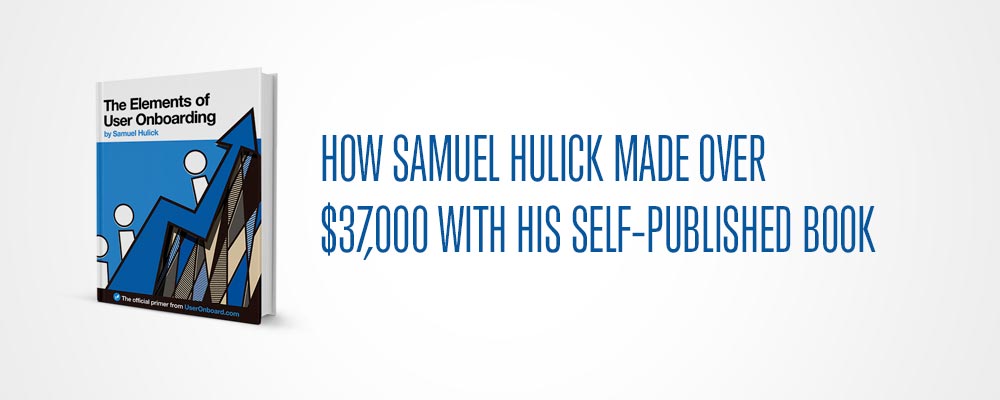
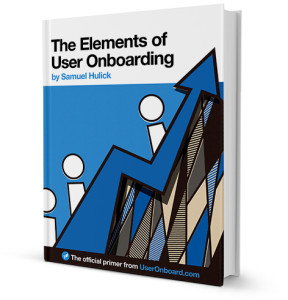
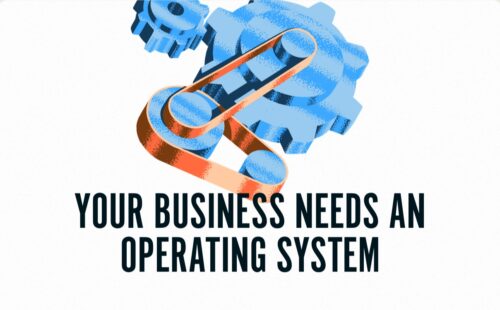
Nice juicy details! Thank you Nathan for this in depth article. It’s motivation to visualize my own book project.
– your Creative Junkie
Nathan, this is a great explanation of how to implement your strategy and I’m so please for Samuel and his new found fame :-) (should I admit that, not being a techie, I had to Google “teardown”?)
I’m already writing my book and it’s all thanks to you.
Everyone and their dog seems to be telling me to write a book but your posts, strategy and commitment has convinced me to produce a quality book that I can be proud of.
Thank you
You’re welcome! Books are powerful in so many ways.
Wow! This was a great case study! I learned alot about product launches in general with this blog post. I’m glad that you mentioned that you validated the market first and verified that there was a genuine desire for this product before you invested the time and energy to create it. They say the “Money is in the List” and you definitely proved it here. Thanks for the great post I will bookmark this to reference in the future.
Great post! Its got me re-thinking creative way to get more people engaged and increase subscriber counts for my upcoming book: http://femgineer.com/transform-ideas/
Hey Poornima,
your book looks really interesting. I am sure you did you share of research on the book title. Since you mention “Start making money on launch day and with a simple solution!” I would be a little more specific and maybe say “How to transform your ideas into profitable software products” or simply “From Idea to Profitable Software Product”.
Check these two articles on how Tim Ferriss tested his titles
http://boingboing.net/2010/10/25/howto-use-google-adw.html
http://futureperfectpublishing.com/2009/01/23/the-sticky-goodness-of-testing-book-titles-with-google-adwords/
Looking forward to it!
Great!! post Nathan,
Question what’s the new Authority has that the old one don’t? Because I was planning on getting the Authority that’s on your site now.
Mainly the audio book and some new templates. If you buy the current one now you can get a free upgrade.
Great write up! Always appreciate the transparency of these types of posts. Keep them coming please. :o)
We’ve got a few more in the next week or so.
Include a link so we can buy his book too. Also, can we get a discount on it for being your subscribers Nathan? =P
There are a few links in there, but I’ll add more.
Nathan, I’ve checked the User Onboarding Book page and there are, just like your books, different packages. It would be great to know the revenue breakdown as you wrote here http://blog.asmartbear.com/selling-ebook.html
p.s.
I bought Authority after a few days you released but never applied the ideas in the book. It’s motivating to see someone else doing it! :)
Maybe Samuel would be willing to provide that information. Glad to hear you might be taking action!
Nathan, thanks for this–yet another bookmark-able entry! Checking out the User Onboard site leads me to ask what resources Samuel uses to put together the Teardowns. I’d like to create something similar for my site.
Thanks again!
Just looks like a simple slideshow that you could create with just about and slider. Via jquery, js or just a plugin.
The slides just look like screenshots or grabs that you could annotate with a program like Skitch or similar.
Hope that helps
Nathan and Samuel,
Thank you for a great case study. Specifically, I appreciate that you shared details like this: “Samuel started writing the book in the beginning of January 2014 when his email list reached the 3,000 subscribers mark.”
I have a question about validation:
Does validation mean a purchase/money exclusively or can other metrics (e.g. number of email newsletter sign-ups) work as well?
about any*
Nathan – Thanks for this case study. I finished your Authority book and all of the interview videos last week. Your book is a quick read and informative. I’ve been following you for a while so I knew some of the content already, but I liked your casual style and I share your passion for sharing knowledge. I listened to the audio version of your book as well read excerpts of the electronic version. I really enjoyed the interviews and hearing different perspectives and experiences.
After reading this article yesterday, I purchased Samuel’s book. I am recording software tutorials right now for my very first course and onboarding is an important part of introducing this new resource to my audience successfully. I’m 20 pages out from finishing Samuel’s book. The book is very well written, well designed and so true! Software training has been a part of every job I’ve held in my career. I can totally appreciate Samuel’s advice. I plan to implement some of his suggestions right away. Thanks Samuel!
Glad you liked it!
Nathan – I left a comment on this post the other day; do you have it? I wanted to make sure you and Samuel saw it.
Wow. From 0 to 3,000 email subscribers in less than 6 months. That’s impressive!
How would this concept of “teardowns” or other attractive content look like in the skills training/career development niche?
Nathan. Been following your content for a while. I was wondering about sites like mine that are religious and try to help and encourage people in their faith. Do your principles apply to these type of blogs and sites? Have you had much feedback? We create music products to help teach basic truths about God. Building an audience is huge for me and I would really like to purchase your book soon but didn’t know if it’s only for sites other than mine. Thanks for all you do! Great content. Learning every day.